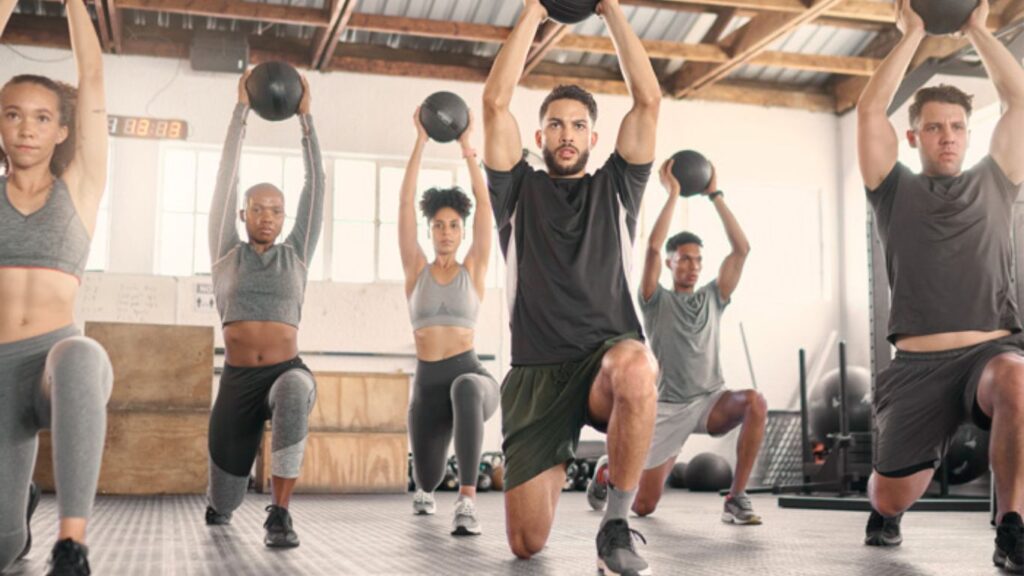In today’s fast-paced world, finding time for exercise can be a challenge. However, the importance of maintaining physical fitness for overall health and well-being cannot be overstated. This comprehensive guide is designed to introduce you to the most effective workouts that can be completed in minimal time, ensuring you stay fit even with a busy schedule. Whether you’re a busy professional, a parent juggling multiple responsibilities, or someone who simply prefers shorter workout sessions, this blog will provide you with the tools and knowledge to achieve your fitness goals efficiently and effectively.
Best Workouts for Time-Efficient Exercise
Understanding High-Intensity Interval Training (HIIT)
High-Intensity Interval Training (HIIT) involves short bursts of intense exercise followed by brief rest periods. This method elevates heart rate quickly, enhancing cardiovascular fitness and burning calories efficiently. The alternating intense bursts and recovery periods challenge the body, boosting metabolism, and improving endurance. HIIT workouts often last 20-30 minutes, offering flexibility in routines and requiring minimal time commitment while delivering significant fitness benefits.
- Efficient Calorie Burn: HIIT maximizes calorie expenditure in short bursts of intense exercise, aiding weight loss goals effectively.
- Enhanced Metabolism: Intense intervals elevate metabolic rate post-workout, leading to continued calorie burn even after exercise cessation.
- Improved Cardiovascular Health: HIIT boosts heart health by improving cardiovascular function and increasing endurance levels.
- Muscle Building and Fat Loss: Simultaneously promotes muscle gain and fat loss, optimizing body composition.
- Versatility and Adaptability: Adaptable to various exercises and fitness levels, accommodating diverse preferences and ensuring consistent workout routines.
- Time Efficiency: Requires only 20-30 minutes per session, making it ideal for busy schedules while delivering substantial fitness benefits.
Bodyweight Exercises: No Equipment Needed
Bodyweight exercises offer diverse benefits:
- Convenience: No equipment needed, making them accessible anywhere, anytime.
- Versatility: Various exercises target different muscle groups, allowing for a full-body workout.
- Improved Flexibility: Movements like yoga or dynamic stretching enhance flexibility and mobility.
- Cost-Effective: Eliminates the need for expensive gym memberships or equipment.
- Enhanced Strength and Endurance: Develops functional strength and boosts endurance.
- Safety and Lower Injury Risk: Lower impact compared to heavy weights, reducing the risk of injury.
- Progressive Challenge: Easily adjustable difficulty to suit various fitness levels, ensuring continual improvements

A quick bodyweight routine can include squats, push-ups, lunges, planks, and burpees. Perform each exercise for 30 seconds with 10 seconds rest in between, repeating the circuit 3-4 times. This full-body workout boosts strength, endurance, and metabolism in just under 15 minutes, perfect for busy schedules.
Tips for maximizing bodyweight workout effectiveness:
- Focus on Form: Ensure proper technique to avoid injury and engage muscles effectively.
- Progressive Overload: Increase repetitions, modify exercises, or reduce rest periods to continually challenge yourself.
- Variety is Key: Rotate exercises regularly to target different muscle groups and prevent plateaus.
- Mind-Muscle Connection: Concentrate on muscle engagement for optimal results.
Tabata Training: The 4-Minute Miracle
Tabata training, named after Dr. Izumi Tabata, is a high-intensity interval training (HIIT) method characterized by short bursts of intense exercise followed by brief rest periods. It typically consists of 20 seconds of all-out effort followed by 10 seconds of rest, repeated for four minutes per exercise. This protocol boosts cardiovascular fitness, accelerates calorie burn, and enhances both aerobic and anaerobic capacities, making it a popular and efficient workout regimen for time-conscious individuals.
How to structure a Tabata workout:
- Exercise Selection: Choose 4-5 compound movements targeting different muscle groups (e.g., squats, push-ups, burpees).
- Timing Protocol: Perform each exercise for 20 seconds at maximum effort, followed by 10 seconds of rest.
- Complete Circuit Rounds: Complete 8 rounds (4 minutes) for each exercise before moving to the next.
- Rest Between Exercises: Rest 1-2 minutes between exercises to recover adequately.
- Warm-Up and Cool Down: Begin with a dynamic warm-up and conclude with a proper cool-down to prevent injury and aid recovery.
- Intensity and Progression: Maintain high intensity throughout and gradually increase reps or resistance for progression.

Circuit Training: Full-Body Workouts in Less Time
Circuit training involves a series of exercises performed consecutively, targeting different muscle groups. Each exercise is done for a specific time or repetitions, followed by a short rest, before moving to the next station. It combines strength training and cardiovascular exercises, maximizing calorie burn and muscle engagement. Circuit training enhances overall fitness, endurance, and strength while offering versatility in exercise selection and intensity, suitable for various fitness levels and goals.
Designing a time-efficient circuit training session:
- Exercise Variety: Select 5-8 compound movements targeting diverse muscle groups.
- Timing Structure: Allocate 30-60 seconds per exercise with 10-15 seconds transition time between stations.
- Efficiency in Setup: Position equipment and stations strategically to minimize transition time.
- Integrate Cardiovascular Elements: Incorporate jump rope, burpees, or high knees to elevate heart rate between strength exercises.
- Minimal Rest: Aim for a continuous flow with minimal rest between stations for optimal time efficiency.
- Adaptability: Adjust exercises and intensity levels to accommodate different fitness levels and goals within a 20-30 minute session.
Strength Training: Efficient Techniques
Strength training is crucial for overall health, enhancing muscle strength, bone density, and metabolism. It aids in injury prevention, improves posture, and supports daily activities. Beyond physical benefits, it positively impacts mental health, promoting confidence and reducing stress. Incorporating strength training into fitness routines is vital for holistic well-being.
Time-saving strength training exercises:
- Compound Movements: Squats engage multiple muscle groups—quads, glutes, and core.
- Deadlifts: Work the entire body, targeting back, glutes, hamstrings, and core.
- Push-Ups: Engage chest, shoulders, triceps, and core simultaneously.
- Pull-Ups/Chin-Ups: Work upper back, biceps, and core effectively.
- Planks: Engage core muscles for stability and strength.
- Lunges: Work legs individually, engaging quads, hamstrings, and glutes.
- Kettlebell Swings: Full-body movement targeting hamstrings, glutes, and shoulders.
- Dumbbell Rows: Work upper back, biceps, and core muscles.
- Bench Press: Engage chest, shoulders, and triceps efficiently.
- Thrusters: Combine squat and overhead press, engaging multiple muscle groups for a time-saving total-body exercise.
Combining strength and cardio
Combining strength and cardio optimizes workouts. High-intensity intervals between strength sets, like jump rope or burpees, elevate heart rate for cardiovascular benefits while preserving muscle-building aspects. This synergy enhances calorie burn, boosts metabolism, and maximizes fitness gains in less time, creating a well-rounded and efficient workout routine.

Yoga and Pilates: Quick Sessions for Flexibility and Core
Yoga and Pilates improve flexibility, strength, and posture while enhancing mental well-being through mindfulness and stress reduction. Yoga emphasizes stretching and relaxation, while Pilates focuses on core strength and stability. Together, they offer holistic fitness benefits, fostering balance, agility, and mind-body harmony.
Yoga and Pilates act as perfect counterparts to high-intensity workouts. They provide a balance by fostering flexibility, mobility, and core strength—areas often neglected in intense routines. These practices aid muscle recovery, reduce injury risks, and enhance body awareness. The mindfulness cultivated in yoga and Pilates complements the intensity of workouts, promoting mental focus, relaxation, and better overall performance during high-energy training sessions.
Conclusion
In the quest for time-efficient fitness, the blend of high-intensity workouts, circuit training, and the inclusion of yoga or Pilates offers a holistic approach. By optimizing every moment in workouts, one can achieve remarkable fitness gains, catering to both body and mind, ensuring a balanced and sustainable fitness journey.
Also read: The Vital Importance of Maintaining a Regular Exercise Schedule
